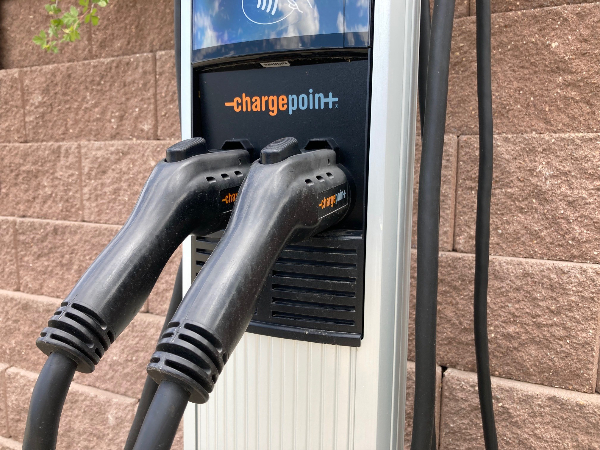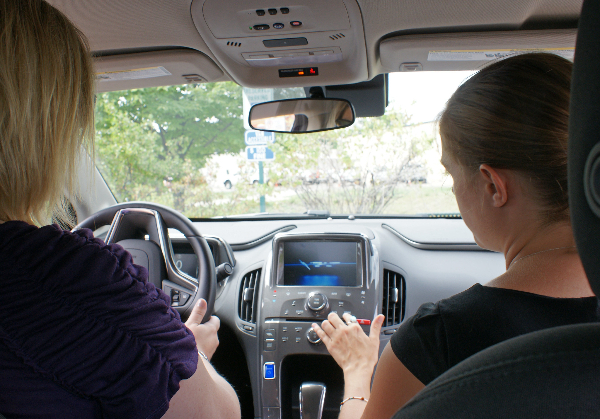EV Incentives
You may be eligible for a range of incentives, including rebates, tax credits and more. Check out Efficiency Works’ interactive EV incentives page by clicking the button below.
Navigating Your Electric Vehicle Journey#
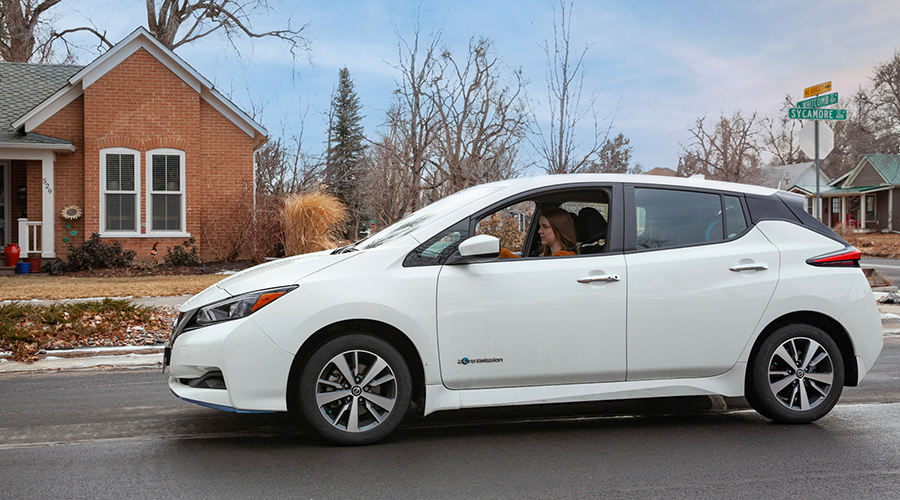
With an electric vehicle (EV), you can save money on fuel and maintenance, improve air quality, reduce your carbon emissions and conveniently charge at home or work.
EV Types#
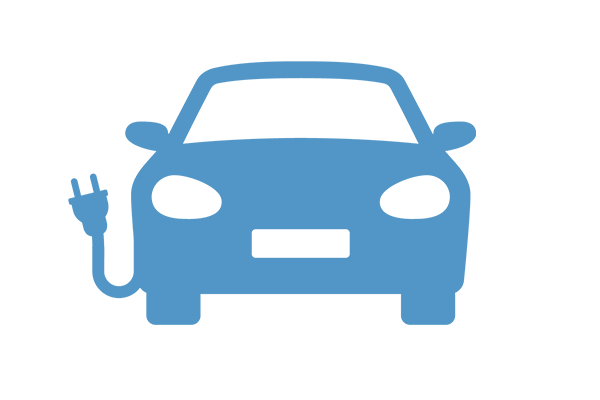
An all-electric vehicle runs on an electric motor. It uses a charger and regenerative braking to charge the battery. The range is generally between 80-370 miles.
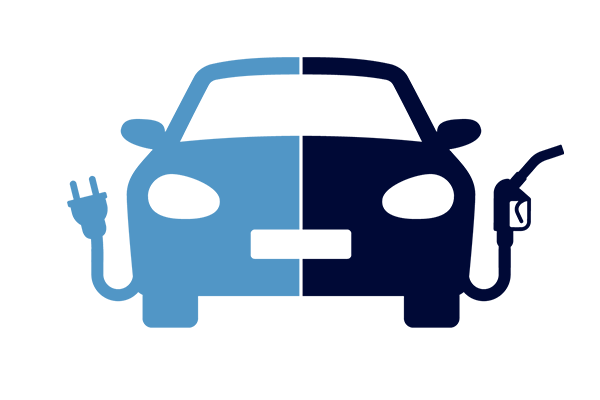
A plug-in hybrid electric vehicle runs on an electric motor and engine. It uses a charger and regenerative braking to charge the battery. Gas kicks in when the battery is depleted. The electric range is generally between 50-80 miles. Total range can reach 600 miles.
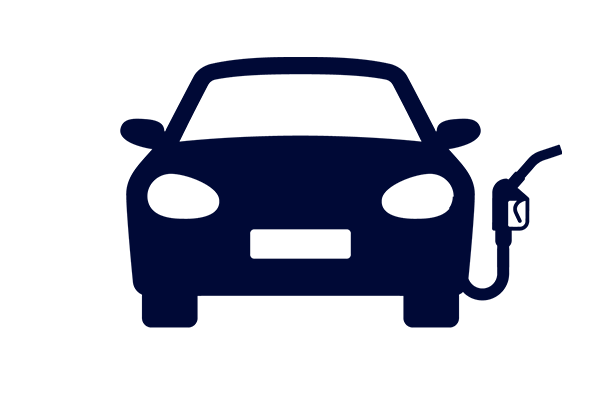
A hybrid electric vehicle runs on an electric motor and engine. It uses regenerative braking to charge the battery but does not use a charger. Its battery can provide 10-50 miles of added fuel economy.
Transition to an EV and feel good about saving money and being environmentally friendly!
- Now’s the time to transition. More EV types and manufacturers are available almost all the time. EVs and chargers are also eligible for federal and state tax credits.
- Contribute to cleaner air by driving a vehicle that puts out zero tailpipe emissions.
- Sick of going to the shop? EVs have fewer maintenance needs than traditional vehicles because they don’t have as many parts. Annual cost comparisons show that driving an EV offers significant ongoing savings.
- You can skip the gas station. There are options to charge at home, in some workplaces or at a public charging location.
- “Filling up” with electricity is less expensive than gas. According to the U.S. Department of Energy, filling up a vehicle that runs on gas costs about three times more than fueling with electricity. Compare the annual fuel cost of your existing car side-by-side with an EV.
- Leave range anxiety in the rear view. Car manufacturers are increasing vehicle range per charge, and more and more charging stations are regularly being installed.
EV Tax Credit Opportunities#
The Inflation Reduction Act (IRA) includes several new requirements that determine eligibility for tax credits.
- Final assembly requirement: For EVs purchased after Aug. 16, 2022, final vehicle assembly must take place in North America to qualify for a tax credit. The Department of Energy published this initial make/model qualifying list to help consumers identify qualifying vehicles.
- The previous $7,500 tax credit will be extended for 10 years, with some conditions:
- Exact amount of the credit will be based on a calculation that considers factors like the vehicle’s sourcing and assembly.
- Consumers need to be income-qualified. People filing as single, who make more than $150,000 a year, and married people filing jointly, who make more than $300,000 a year, are no longer eligible.
- Tax credits are unavailable for cars with a manufacturer's suggested retail price (MSRP) of more than $55,000. Vans, pickup trucks and SUVs cannot exceed a MRSP higher than $80,000.
- Used vehicles that cost less than $25,000 are now eligible for a tax credit of either up to $4,000 or 30% of the vehicle price, whichever is less.
Frequently Asked Questions#
-
It depends on the size of the vehicle's battery and whether you’re charging it during on peak or off-peak hours. For example, let’s say you are charging your electric vehicle during off-peak hours and it has a 24-kilowatt-hour size battery. If the electricity costs $0.07 per kilowatt-hour, then the cost for one full charge at home would be $1.68 (assuming the battery is fully depleted).
The best time to charge an EV is during off-peak hours as the rates are three times less than on-peak hours. You can find more information on Time-of-Day (TOD) rates at the Fort Collins Utilities Residential Electric Rates page.
-
Charger Type What You Need Base Cost to Install Voltage and Current Type Charging Time (Hours to Full) Typical Location Considerations Level 1 Regular GFI outlet, available everywhere None 120V
Alternating Current (AC)2 to 5 miles of range per hour (12-24 hours) Homes - Accessible
- Slowest fill up time
Level 2 Charging equipment and a licensed electrician $1,500-5,000 240V
AC10 to 20 miles of range per hour (3-8 hours) Homes, public charging, at-work charging - Convenient
- Cheaper to charge at home if charging off-peak
Direct Current (DC) Fast or
Level 3Charging equipment and a licensed electrician $10,000-30,000 480V
DC60 to 80 miles of range per 20 minutes (30 minutes - 2 hours) Public charging stations - Most expensive to install
- Fastest charging time
-
- Practice energy conservation (turn off lights when you leave a room).
- Reduce the amount of energy your home uses through energy efficiency improvements, like switching to a smart thermostat or LED lighting.
- Install solar or increase your existing solar system’s size.
- Replace natural gas-powered space heating, water heating and appliances with high efficiency electric models.
Fort Collins Utilities offers various programs to support energy efficiency and energy conservation. Click the button below for more information.
-
As the community transitions to more and more EVs, Fort Collins Utilities is ready to ensure that we continue to provide highly reliable electric service. Our system is well-designed for EV electric loads and we are committed to improving the flexibility of our grid to help increase renewable generation and reduce carbon emissions.
SPAN Panels Now Allowed By Building Services!#
The Fort Collins Building Department now approves SPAN panelboards for installation in the City of Fort Collins. There are several other competitors in that smart panel technology space, including:
- Leviton Load Center
- Schneider Electric Pulse
- Lumin Smart Panel
- Savant Power Module
- Eaton Energy Management
Contractors installing smart load panels need to supply information demonstrating that the technology proposed for installation is a listed product that was tested through an approved third-party testing agency. For more information, contact Building Services at buildingservices@fcgov.com or 970-416-2740.
Charging at Home#
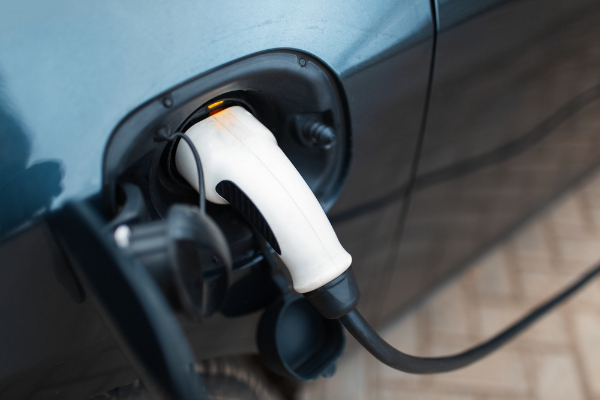
The first step on your road to charge at home is hiring an electrician or licensed contractor. They will inspect the capacity of your electric service and discuss the type of charger you prefer.
- Consider what works best for you and your home. Take into account the desired charging time and your electrical panel’s size. Check out ENERGY STAR® certified chargers here.
- If your electric service capacity is large enough to add a charger, the contractor will apply for an electrical permit, install the charger, and schedule an inspection with the City Building Department.
- If your electric service capacity is not large enough, a professional will need to upgrade it. Please reach out to electricprojectengineering@fcgov.com to discuss the costs associated with increasing the service size to your home. Your electrician will apply for a permit and schedule an inspection with the City Building Department before beginning their work.
Public Charging#
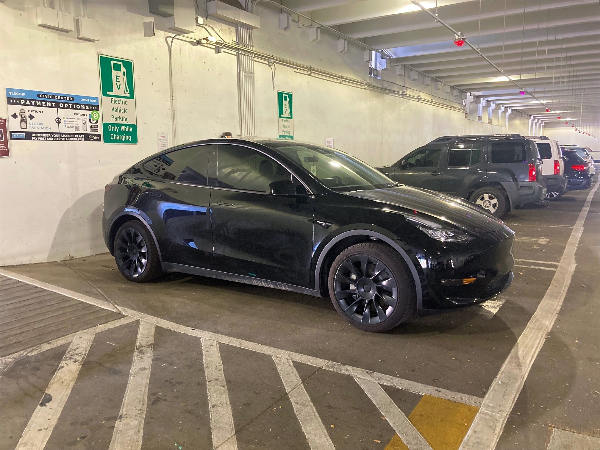
Fort Collins Utilities owns several EV charging stations around the community. Charging stations cost drivers a flat rate of $1/hr. The locations are as follows:
- Downtown Civic Center Parking Garage
- Downtown Firehouse Alley Parking Garage
- Mulberry Pool
- Senior Center
- South Transit Center
- EPIC (Edora Pool Ice Center)
- Platte River Power Authority
Other Public Charging Stations#
There are many charging stations around Fort Collins. Click the button below to view their locations, availability and other details.
*Please note, charging stations are listed here for awareness only. The status of individual chargers may vary.
Additional Resources#
Did You Know?
You can reduce ‘vampire’ power waste by unplugging electronics that are not in use or plugging them into a smart power strip.
A new washing machine can save you money. It can also save your clothes. Click here for the whole story.
Ensuring the air flow around your refrigerator is not obstructed helps your fridge run more efficiently.
